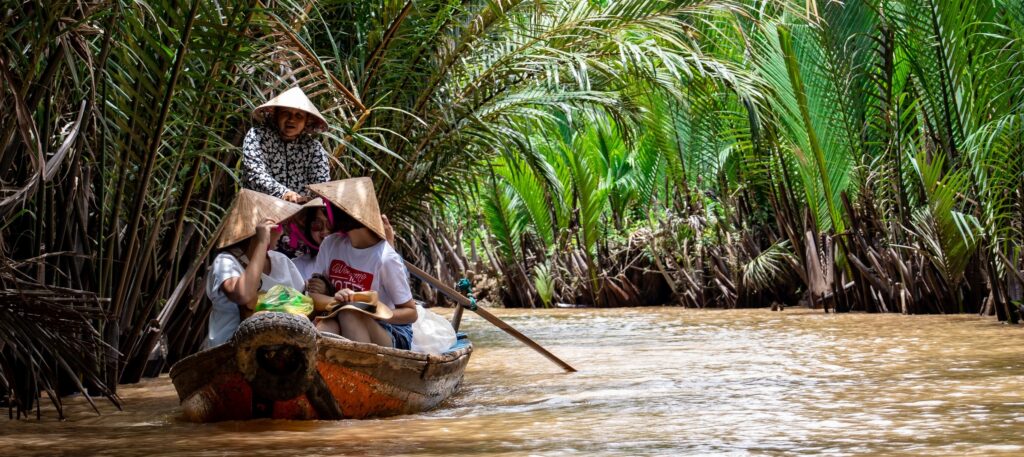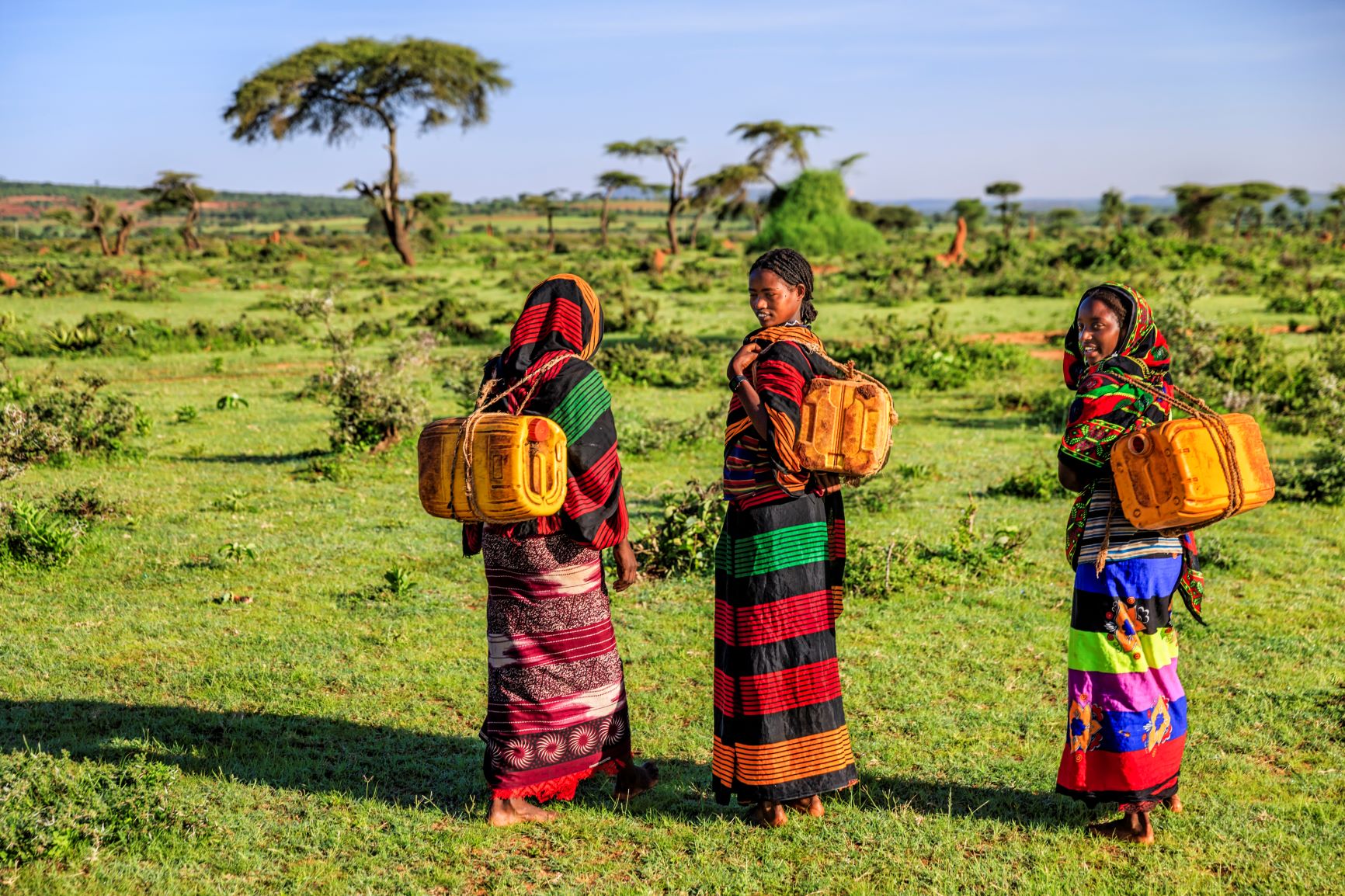The idea of guaranteeing a positive community impact is a concept that tourists are already embracing and including in their travel requests.
Usually, this idea is associated with certain activities that visitors choose to be involved with. Most experiential activities offered in partnership with representatives of local communities are moving in this direction and they are very much welcomed by the tourists who are happy to ‘see’ the impact that they leave with the direct beneficiaries.
On another level, though, thinking about the relationship that – as tourism businesses – we have with the local communities, we believe that there is space for innovation and new creative dynamics.

Giving & Taking
When we talk about impact, we often hear mention of ‘giving back’ to the local communities. This idea, though, might have negative connotations.
If, in fact, we reflect on the words used, we notice that ‘giving back’ implies that we have previously taken away something and, somehow, we need to make amends for our misconduct.
Used consciously or not, we know that words matter because they carry meaning, and by using this specific phrase, we might continue spreading a particular vision of tourism and attitudes that we should be discouraging, if we want to move away from the idea of being an extractive sector.
However, the expression contains a core positive message that needs to be nurtured.
The idea of ‘giving back’ wasn’t born in the tourism space, in fact it is a central concept of philanthropic and volunteering activities and is strongly related to ‘gifting’ as an act of kindness, but also implies a recognition of value by the recipients.
Gifting to others is a noble act, and although tourism is not a philanthropic organisation, we can still incorporate those ideas into our approach, and perhaps move consciously to a different course of action.
Promoting Change of Perspective
We should ask ourselves how tourism can create a new kind of relationship with the local communities it operates in, in a way that is not giving back what it might have taken, or what it might be about to take from it.
To find ways to compensate, for example, for the environmental damage that the tourism business might impose on local biodiversity, it feels like the perverse concept of ‘giving back’ is used to wash the guilt away.
We prefer to believe that the positive impact of tourism is to do with a conscious plan to promote the well-being of the local communities and support the improvement of their living conditions through tourism activities, directly as well as indirectly.
There are different ways in which a business might decide to contribute to the community, beyond merely promoting experiential activities that makes tourists feel more involved.

Of course, one way could be through the direct employment of community members, supporting the increase of local skills and professional development at the destination level.
A second, and more effective way, could be to include services that the communities already offer in the supply chain – inviting the local farmers and fishermen to become the food providers for our hotel and lodge, for example. It could also translate into encouraging the creation and improvement of other existing services, such as the means of transport available to the clients.
A third way could be to engage with local actors, like NGOs and local governments, to get in touch and support the work of the local women’s associations. This approach would help to maximise the social and cultural benefits, beyond any potential economic advantage, and create a deeper level of engagement and trust.
This would not only help the local economy to run, but it would also help to avoid the abandonment of the land and of traditional activities.
However, to complete the picture, we should also ask ourselves: which other activities at our tourism services at the destination could help to improve nature and the social, and cultural conditions of the local communities?
In other words, how can we as an industry contribute to solving problems in the local community, while we are running our businesses.
In a destination heavily affected by plastic pollution, for example, the tourism business might decide to invest in an environmental conservation project to save water and ban the use of plastic, while investing in other alternatives.
In our opinion, carrying out tourism in a sustainable way is about taking responsibility for our actions and for all the effects that we create at the destination level.
This means not only being aware of our carbon footprint, and avoiding adding to it, but also, finding alternatives and new ways of reducing it.
Responsibility as a Choice of Action
Taking responsibility means recognising that we have an active role in the way we conduct business, but most importantly, it means that we can choose the way we do business.
Choosing to have a positive impact implies that our actions are the result of a calculated plan, a step in a long-term vision plan, rather than being an accidental result of a one-off move.
We believe that sustainability is a constant journey towards overall positive impacts that needs constant evaluation, monitoring and adjustment.
For these reasons, when we think of community Impact, we picture it as a part of what the industry should do on a regular basis, rather than as an add-on to its normal activities and operations.

Expanding the Concept of Impact
There are many examples of engaged businesses that have already chosen to build their companies in harmony with the surrounding environment – natural as well as social – and we are proud to see that many of our members are actively contributing to the bettering of local community living conditions.
What we observe is that the most successful examples have adopted, and maintained, an expanded definition of ‘impact’.
Those experiences suggest that to guarantee social impact it is not enough to support the women with capacity building and new career opportunities, it is also necessary to link those opportunities to new access to finance, where usually there is no access to credit. This is so that they can invest, for example, in their own entrepreneurial ventures that grow from the tourism services that they are already offering.
The microfinance saving scheme that Volcanoes Safaris has run through the Volcano Safaris Partnership Trust (VSPT) since 2018, is moving in the same direction.
In fact, it provides a loan ‘that will help to generate income from investment in small scale agricultural projects, as well as weaving baskets, and breeding domestic animals.’

Beyond the Environmental
Included in the concept of positive community impact, a special place must be reserved for the environment and the delicate balance that communities need to constantly sustain it.
Therefore, projects that invest in alternative sources of energy – like solar or wind power – or that explore other possibilities of reducing the energy dependence on fossil fuel sources, are always interesting and productive projects to support and fund.
Although we recognise the importance of working with a specific focus on the environmental dimension of sustainability, we are aware that our view should always be broader.
For this reason, we warmly welcome the ‘area approach’ adopted by one of our members, Asilia Africa.
Considering the conflict that East African communities experience daily between conservation efforts and their own survival, Asilia’s approach reminds us that any long-term impact on the local communities will never work unless we recognise what the communities represent within the wider picture of all the other dimensions of sustainability: social, economic and cultural too.
Moving beyond a simple ‘holistic’ view, the approach can expand toward a ‘fusion’ which essentially means considering all the variable and complex dynamics that exist in a region and making sure that while we benefit the environment, communities are also considered and vice versa. This ensures that what is important to and needed by the communities does not clash with the environmental ‘needs’, nor that nature is protected at the expense of the communities’ survival.
Long-term plans should also strive to return to interconnectedness and include the value of collaboration and joint efforts.
Written by Elisa Spampinato


Recent Posts
Categories